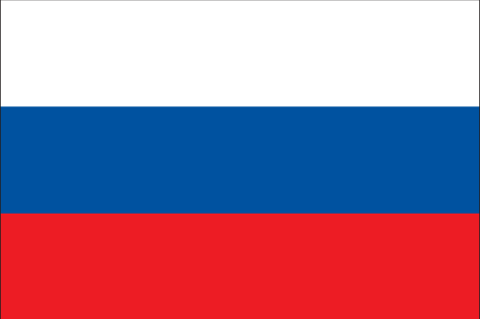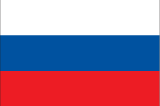
Russian Flag
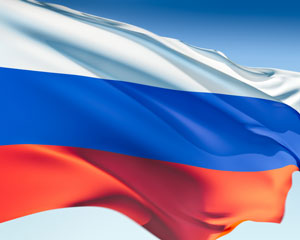 While the hammer and sickle on a red background will always be associated
with the Russian flag, this flag was actually abolished in 1991, when the
Soviet Union collapsed.
While the hammer and sickle on a red background will always be associated
with the Russian flag, this flag was actually abolished in 1991, when the
Soviet Union collapsed.
The current flag is the country's original flag, and was designed by Peter the Great in the 17th century, after he visited western Europe. The flag, a variation of the Dutch flag, was initially used as a civil ensign for Russian ships. It was officially recognized as the country's flag in 1799.
The flag is a horizontal tricolor of white, blue, and red. When other eastern European countries began to seek liberation from foreign domination during the 19th century, they also adopted these three colors in honor of Russia. As a result, the colors of red, blue, and white are known as the Pan-Slavic colors.
Russia Country Profile
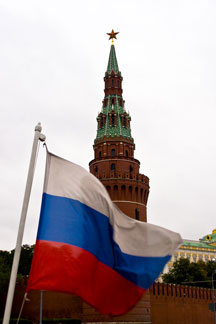 Russia comprises about 6.6 million square miles, and is home to 143
million people. The official language is Russian, the currency is
the Russian rouble, and the capital is Moscow. Russians make up
approximately 82 percent of the population, though there are about 150
smaller ethnic groups that call Russia home.
Russia comprises about 6.6 million square miles, and is home to 143
million people. The official language is Russian, the currency is
the Russian rouble, and the capital is Moscow. Russians make up
approximately 82 percent of the population, though there are about 150
smaller ethnic groups that call Russia home.
Russia is flanked on the north and east by the Arctic and Pacific Oceans, and is known for its two-season climate that trades warm summers with arctic winters. While most regions endure a cold winter climate, the weather in the east is particularly harsh. As a matter of fact, Verkhoyansk, which is located in Siberia, holds the world's record for the coldest temperature outside of Antarctica. The temperature, which was recorded during the month of January, was -94° F.
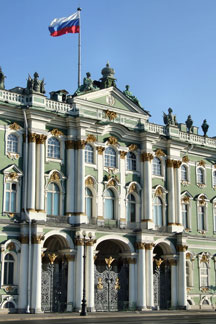 Russia's main resources include oil, natural gas, electricity,
hydrocarbons, gold and other precious metals, timber, and diamonds.
Despite their large number of resources, Russia has been slow to export
and benefit from them. Organized crime, poorly implemented federal
laws, and corruption that has occurred since the fall of the Soviet Union
have also prevented Russia from fully benefiting from its natural
resources.
Russia's main resources include oil, natural gas, electricity,
hydrocarbons, gold and other precious metals, timber, and diamonds.
Despite their large number of resources, Russia has been slow to export
and benefit from them. Organized crime, poorly implemented federal
laws, and corruption that has occurred since the fall of the Soviet Union
have also prevented Russia from fully benefiting from its natural
resources.
In addition, the disparities between the wealthy and the poor have also significantly grown since the fall of the Soviet Union. Today, those who are involved in organized crime are Russia's wealthiest citizens, while more than a quarter of the population lives in extreme poverty. Living conditions in major cities are often cramped and unhealthy, and because medicines and care are in short supply, two-thirds of all children in Russia suffer from health issues.
Despite its harsh climate and shaky political environment, Russia remains the seventh most traveled tourist destination in the world. Attractions include Moscow and St. Petersburg, where the Kremlin and famed Hermitage Museum are located, respectively, as well as the Pskov area, which is renowned as the setting of Pushkin's works. Tourists looking for a high-end experience can travel from St. Petersburg to Tashkent on former president Brezhnev's train, while trips down the Volga, where many famous monasteries can be seen, are also popular. Still, much of Russia remains unavailable to the average tourist.
Related Russian Links
- Russia Facts - information about Russia and its flag.
- Russian Federation Government - Russian Federation Prime Minister site.
- Russia Map - Russia maps, geography, and tourism.
- Russia News - news articles and facts about Russia.
All rights reserved. About us.
